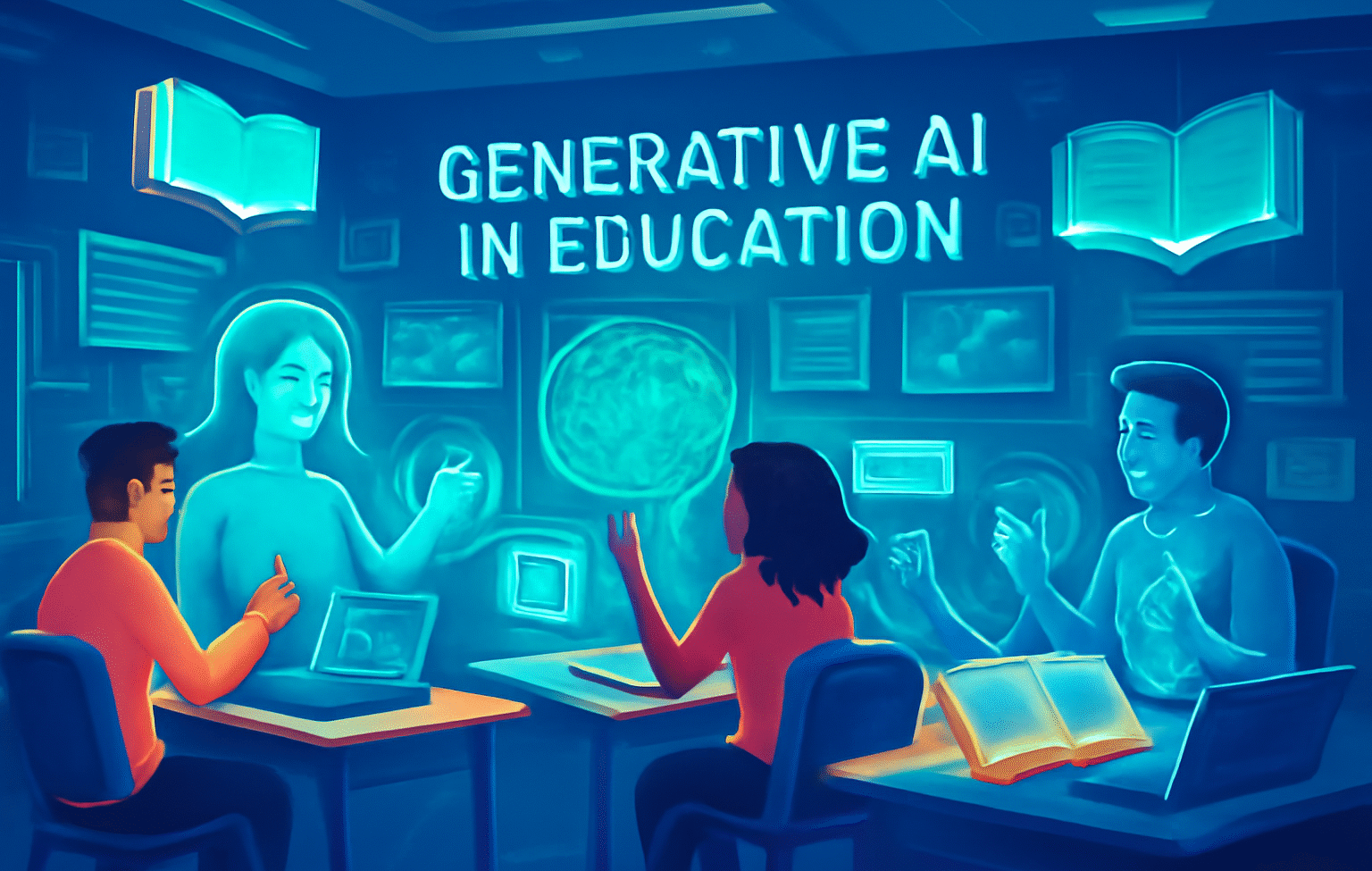
Exploring Generative AI in Education: The Future of Personalized Learning
Artificial Intelligence (AI) has emerged as a transformative force across industries, and education is no exception.
In 2025, generative AI education is redefining how students learn, teachers instruct, and institutions manage learning processes.
Unlike traditional AI models focusing solely on automation or data analysis, generative AI — including powerful language models like ChatGPT and advanced content generators — offers remarkable new ways to create personalized, engaging, and accessible educational experiences.
This article explores how generative AI is shaping education today and illuminates the benefits, ethical challenges, and future prospects.
What is Generative AI in Education?
Generative AI refers to algorithms that can produce content, communicate naturally, and adapt dynamically based on input data.
Examples include large language models that write essays, create quizzes, or simulate conversations, as well as image generators and multimodal AI systems.
In education, generative AI is applied in various ways:
- AI tutors: Conversational agents that provide individualized explanations, answer student questions, and mimic human tutoring styles.
- Automated content creation: Tools that generate lesson plans, summaries, quizzes, and multimedia resources tailored to curriculum standards.
- Curriculum adaptation: Systems that dynamically adjust learning paths and difficulty based on student progress.
- Custom assessments: AI tools that create or evaluate tests, essays, and projects with consistent, unbiased criteria.
The relationship between teachers and AI is collaborative — AI provides scalable, data-driven support, freeing educators to focus on mentorship, critical thinking development, and emotional engagement.
Benefits of Generative AI in Education
Personalization for Every Learner
One of the most powerful advantages of generative AI is enabling personalized learning at scale. Unlike one-size-fits-all methods, AI systems analyze student data and learning preferences to customize content, pacing, and assignments.
For instance, an AI tutor might generate extra practice problems for a student struggling with fractions while offering advanced exercises to those excelling. This tailored approach helps close achievement gaps and fosters deeper understanding.
Efficiency Gains in Grading and Administration
Generative AI automates many time-consuming tasks. Automated grading of essays and assignments accelerates feedback loops, allowing students to learn from mistakes promptly. Administrative duties such as attendance tracking, scheduling, or report generation can also be streamlined.
Such efficiency lets educators dedicate more hours to interactive teaching and individualized student support.
Enhanced Student Engagement
Generative AI can power interactive and immersive content—such as AR/VR simulations, storytelling, or adaptive quizzes—that capture student interest. For example, virtual reality environments combined with AI narration enable students to explore historical events or scientific concepts hands-on, enhancing retention and creativity.
Accessibility for Diverse Needs
Students with disabilities gain considerable benefits from AI. Generative AI tools offer text-to-speech, speech recognition, language translation, and customized quizzes designed to accommodate varied abilities and learning styles, ensuring more inclusive education.
Challenges and Ethical Considerations
Data Privacy and Security
Generative AI education relies on collecting and processing sensitive student data. Safeguarding this information against breaches or misuse is paramount. Educational institutions must implement robust cybersecurity measures and transparent data policies.
Bias and Fairness
AI models trained on existing data risk perpetuating biases, which can affect grading, content recommendations, or even career guidance. Ensuring fairness requires continuous auditing, diverse data sets, and human oversight to prevent discrimination.
Avoiding Over-Reliance on Technology
While AI excels at automation and personalization, exclusive dependence risks diminishing human empathy and creativity in teaching. The emotional support and mentorship educators provide remain irreplaceable.
Equitable Access
The digital divide creates disparities where underserved communities may lack devices, connectivity, or trained staff to utilize AI tools effectively. Policymakers must address infrastructure and training gaps so generative AI benefits all learners.
The Future of Generative AI in Education: A Human-Centered Approach
Teachers as Facilitators and Mentors
The educator’s role is evolving from knowledge dispenser to facilitator and mentor. AI handles routine tasks and content adaptation while teachers nurture critical thinking, creativity, and socio-emotional skills.
AI as an Enhancer, Not Replacer
Generative AI should augment human instruction—providing data-driven insights and creative tools—but never replace the uniquely human aspects of teaching.
Emerging Innovations
Looking ahead, expect advances such as:
- Adaptive learning systems that continuously refine strategies based on real-time feedback.
- AI-powered lifelong learning platforms enabling workers to upskill dynamically.
- Next-generation assessment tools offering holistic evaluation beyond standardized tests.
Predictions for the Next 5–10 Years
Students will likely experience highly interactive, personalized learning journeys woven seamlessly with AI. Teachers will increasingly rely on AI to inform instructional decisions and cultivate student potential.
Practical Tips for Educators and Institutions
- Integrate AI tools responsibly: Pilot new solutions, evaluate impacts carefully, and maintain transparency with students and parents.
- Invest in training: Provide educators with ongoing professional development on AI capabilities and ethical considerations.
- Promote digital literacy: Teach students to critically evaluate AI outputs and use technology creatively.
- Develop clear policies: Establish guidelines addressing privacy, bias mitigation, and equitable access.
Conclusion
Generative AI is transforming education in profound ways by enabling personalized, engaging, and accessible learning. However, adopting AI thoughtfully and maintaining the indispensable human element in teaching are essential to maximize benefits while addressing ethical and practical challenges.
As education embraces these smart technologies, the future will depend on synergizing AI’s power with human empathy and insight to create learning environments where every student can thrive.

